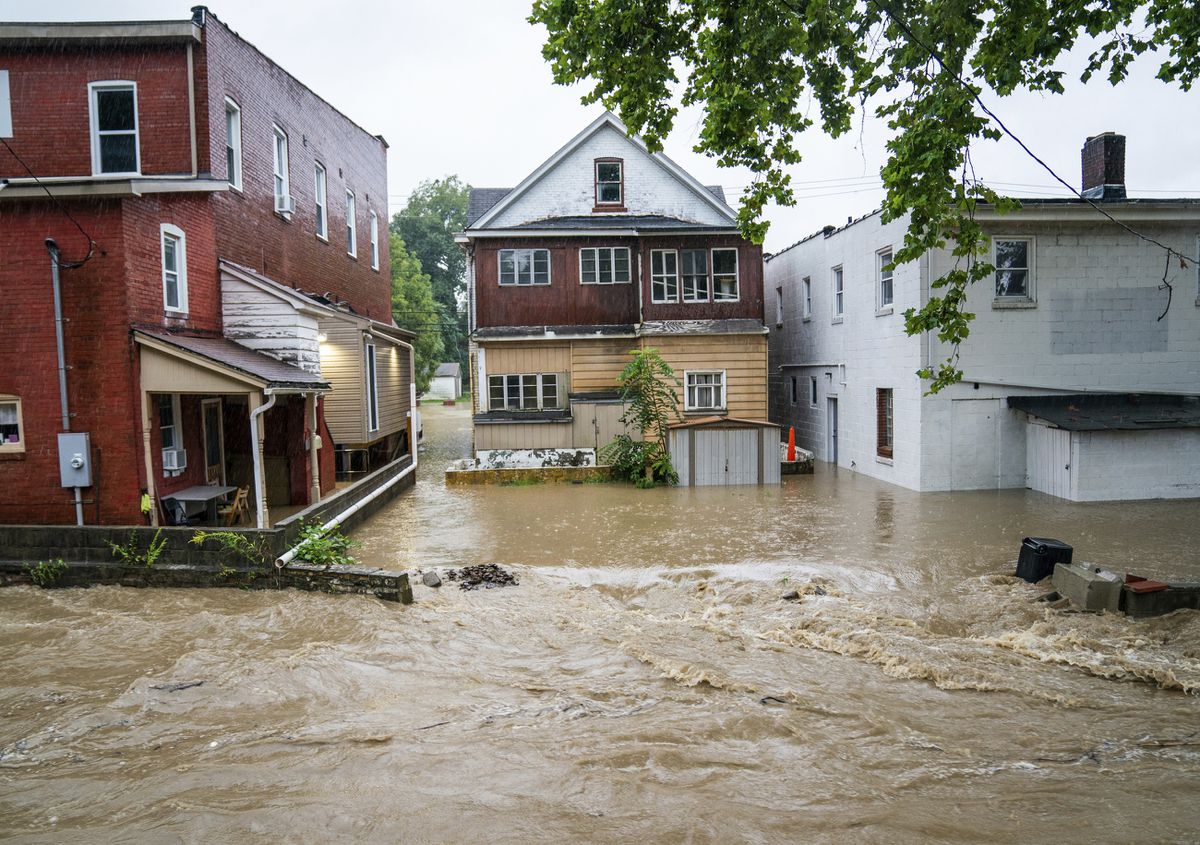Hurricane Hazards
There are a variety of hazards associated with tropical cyclones. While most people recognize the damaging impact of wind, there are a few hazards that can, directly and indirectly, affect them as well.

courtesy of Louisiana Wing of the Civil Air Patrol
This hazard is the one that is most commonly associated with tropical cyclones. The strongest winds are concentrated around the eye of the storm and can reach speeds of over 155 mph. Depending on the storm's size, hurricane-force winds (75 mph and above) can extend out up to 100 miles from the center of the storm, and tropical-storm-force winds (less than 75 mph) have been observed over 300 miles away.

Flooding from tropical cyclones is not correlated with the storm's intensity but rather the speed at which the storm is moving. Heavy, torrential rains can occur hundreds of miles away from the storm, meaning that a storm does not have to make landfall in a particular area to cause problems from significant rainfall. Even after the winds have subsided, the flooding potential from storms can remain for several days after the initial event. In fact, inland flooding is the most significant risk for those away from the coastline.

Tornadoes produced by tropical cyclones typically form in the right front quadrant of the storm, relative to the direction of the storm's forward motion. While these tornadoes are generally less intense than those associated with non-tropical thunderstorms, they can move relatively fast (speeds over 50 mph) and are rarely accompanied by hail and lightning. While most tornadic storms track from a westerly direction to an easterly direction, tropical tornadoes will move from east/southeast to the west due to the movement of rainbands. Tornadoes can also form in the far outer rainbands of tropical cyclones, which can be hundreds of miles away from the center.

The strong winds from tropical cyclones can also be responsible for creating dangerous waves. As these waves break onshore, they can produce rip currents, even if the storm is still far away. Rip currents are channels of water, moving at speeds up to 5 mph, flowing away from the shore. The powerful currents are especially dangerous because they can pull strong swimmers hundreds of feet away from the coastline, even when the weather at the beach appears calm.